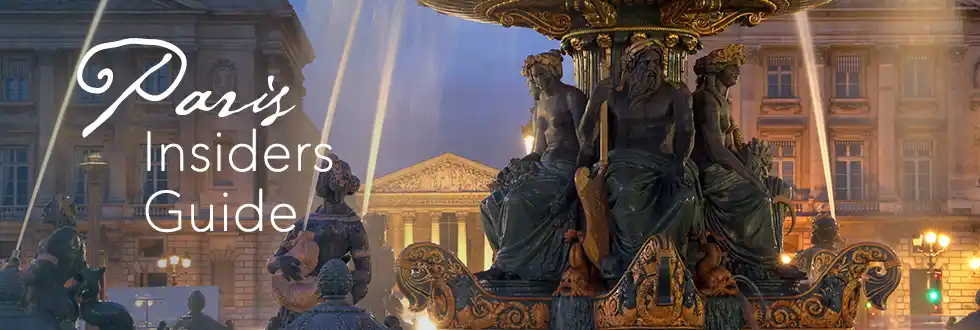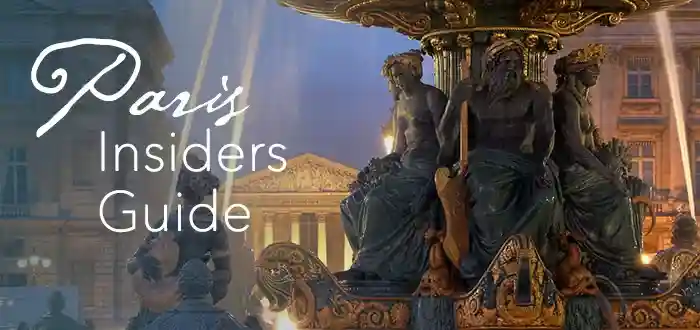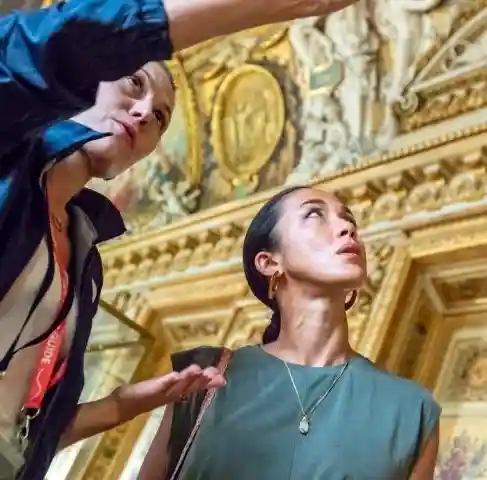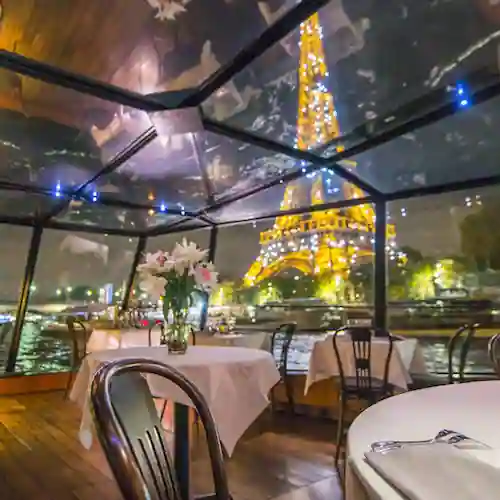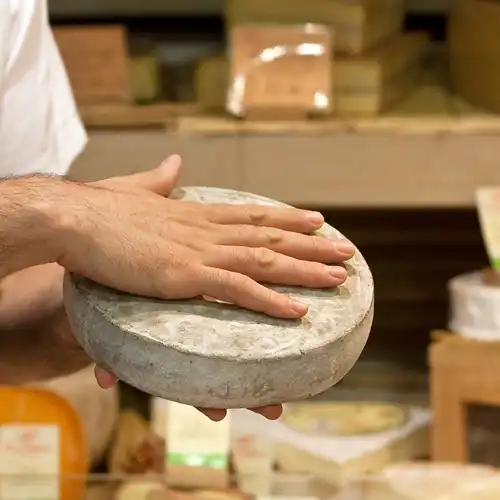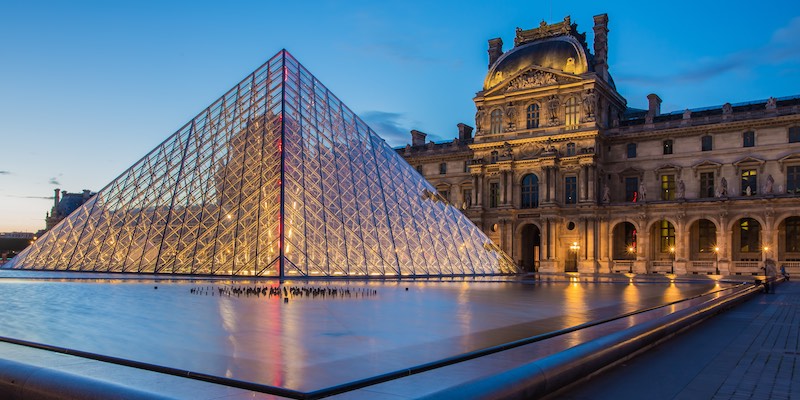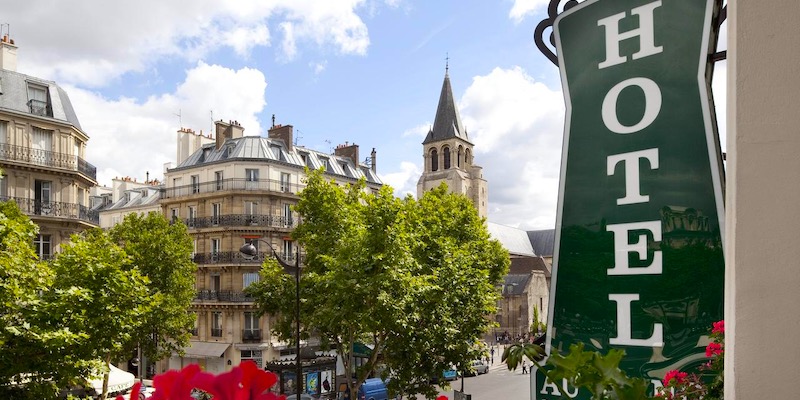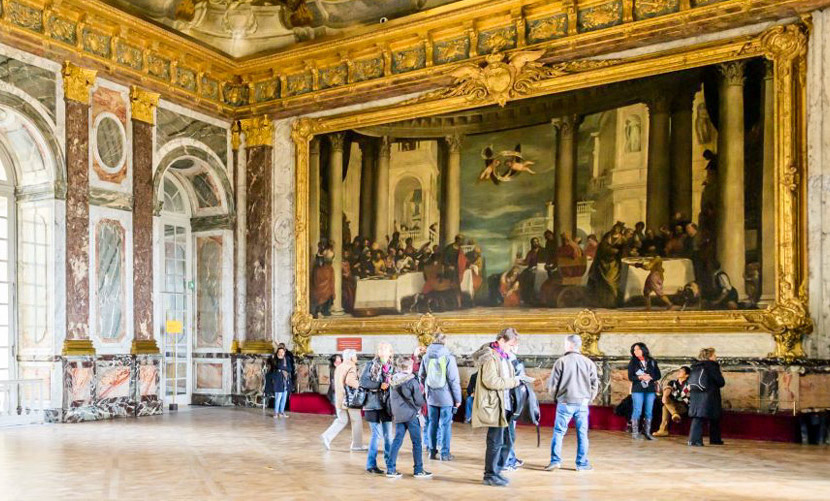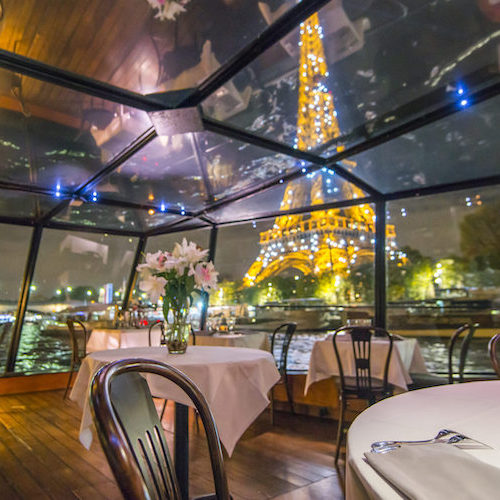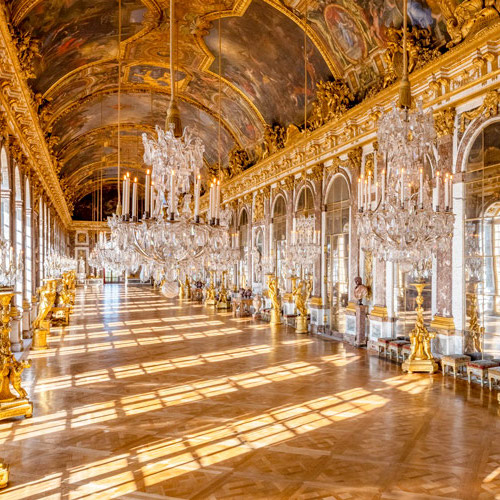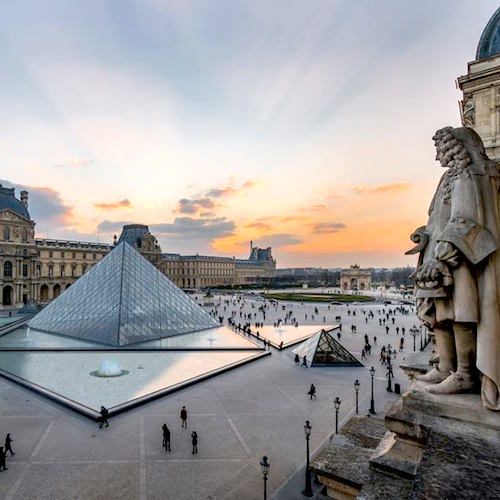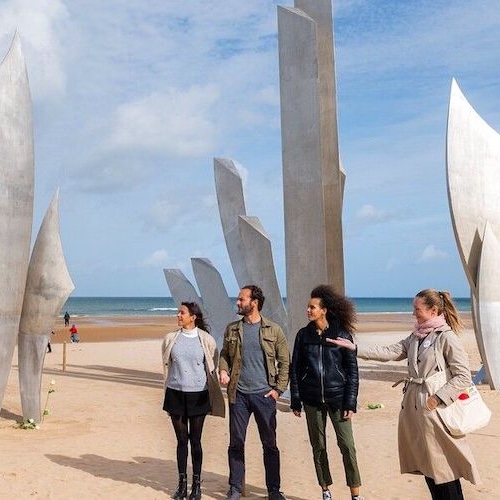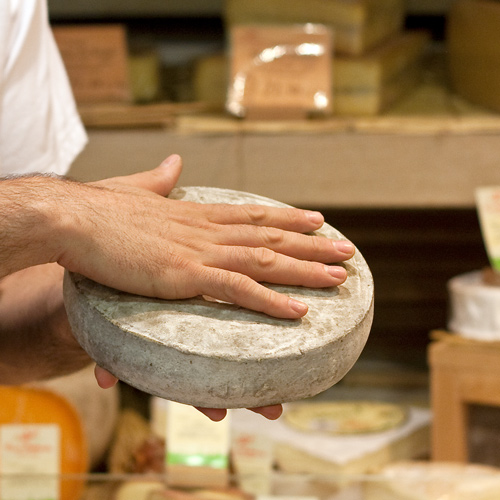Napoleon's Paris – Take A Walk In The Emperor's Footsteps
Plus ça change, plus c'est la même chose. Paris has changed a lot since Napoleon Bonaparte trod the streets — it's bigger, there are more arrondissements, there are some tall buildings — but in some ways the center of the city would still be recognizable to Napoleon — because he built a lot of it.
You're likely aware of the impact Napoleon made on French laws, education, even military strategy. But he was also a builder who was interested in improving Paris… and glorifying himself, of course. A lot of what Napoleon left behind was built to commemorate military victories, but he also completed parts of the Louvre, built the first grand street in the center of Paris, and improved the water and sewer system. Let's take a virtual stroll where Bonaparte himself might have walked more than two centuries ago.
![]()
|
Skip the long lines and dive into the Louvre’s greatest hits — the Mona Lisa, Venus de Milo, and more — on a guided tour that shows you the treasures without the museum overload. |
|
Skip the long lines and dive into the Louvre’s greatest hits — the Mona Lisa, Venus de Milo, and more — on a guided tour that shows you the treasures without the museum overload. |
1. Napoleon & the Louvre
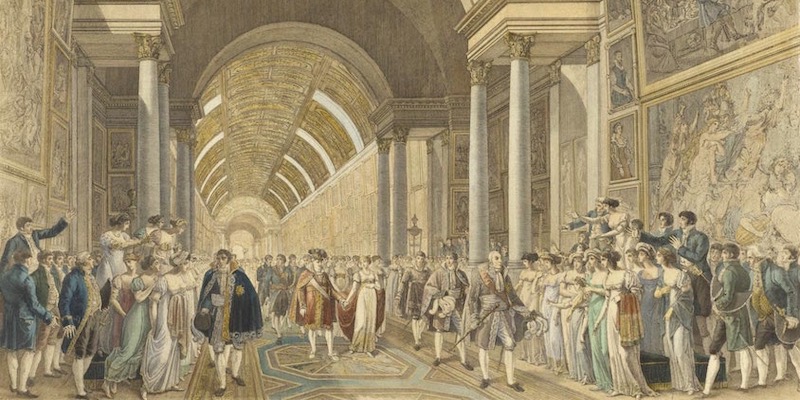 The marriage of Napoleon to Marie Louise of Austria in the Grand Gallery of the Louvre in 1810
The marriage of Napoleon to Marie Louise of Austria in the Grand Gallery of the Louvre in 1810
Let's begin at the (former) center of royal power in Paris — the Louvre. What started life as a 12th-century fortress slowly evolved over centuries to become a royal palace, where the French kings lived and held court. (Except for that time when Louis XIV moved the court to Versailles and virtually abandoned the Louvre Palace.)
In the mid-16th century another palace was added to the royal Louvre complex — the Tuileries Palace, located between the Louvre and the Jardin des Tuileries. When Napoleon came to power as First Consul at the end of the tumultuous French Revolution, he moved into the Tuileries Palace and made it the new center of power (and later of imperial power). That happened in 1799.
![]()
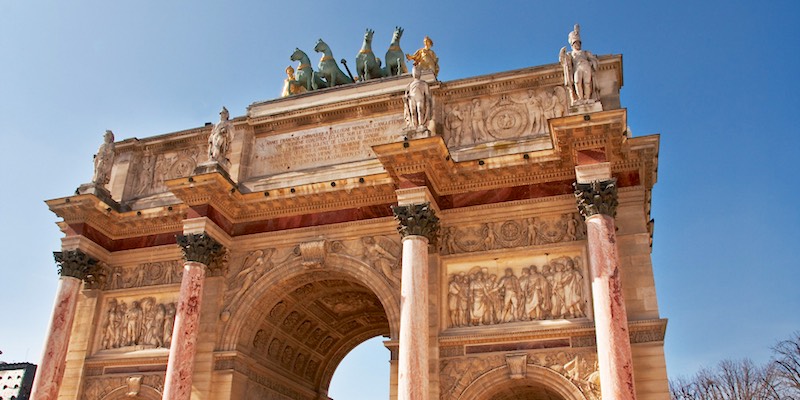 Arc de Triomphe du Carrousel, between the Louvre and Jardin des Tuileries
Arc de Triomphe du Carrousel, between the Louvre and Jardin des Tuileries
![]()
Although French kings had been expanding the Louvre over the centuries, they had forgotten to put a roof on some of the wings. (Royalty — they have so much on their minds.) The ever-tidy Napoleon corrected that overhead oversight during his time at the complex. In addition, he built one of his self-glorifying triumphal arches — Arc de Triomphe du Carrousel — between the Louvre and the Tuileries. (Photo above.) You pass under it today every time you walk from the museum to the Tuileries Garden on your way to Place de la Concorde.
The other important thing Napoleon did at the Louvre was to expand it as a museum — to show off the art he had plundered on his campaigns. (Almost all of that art was returned to the home countries after the demise of the emperor.) In fact, during his lifetime the collection was called Musée Napoleon.
But wait, we hear you say, how come I don't see the Tuileries Palace next to the jardin? Because it was burned by a mob during another tumultuous period of French history, the Paris Commune in 1871, never to be rebuilt.
2. Rue de Rivoli
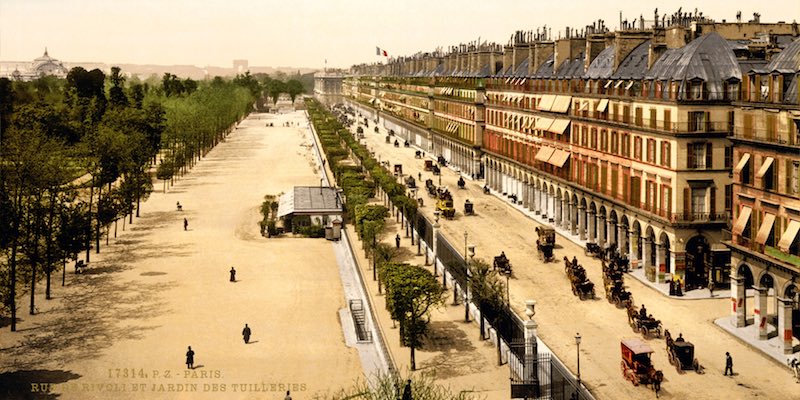 Rue de Rivoli and Jardin des Tuileries c. 1901, one hundred years after it was begun
Rue de Rivoli and Jardin des Tuileries c. 1901, one hundred years after it was begun
Let's leave the Louvre complex by the north exit to turn left and take a stroll through the arcades of Rue de Rivoli, running next to the Jardin des Tuileries. For this is another legacy of Napoleon and still one of the most famous streets in Paris (neck in neck with Avenue des Champs-Elysées). Being Napoleon, he named the street for the site of one of his early military victories in Italy, although it was the Austrian army he defeated there in 1797.
The stretch of Rue de Rivoli built by Napoleon, from the Louvre to Place de la Concorde, shows off an early example of urban design codes — builders were required to adhere to a single design for the fronts of the buildings, resulting in a pleasing uniformity. (Baron Haussmann applied that same idea to much of the rest or Paris in the mid 19th century.) Subsequent expansion of Rue de Rivoli continued east so that today there is nearly a mile of arcades. Walking in the long arcade is truly walking in Bonaparte's footsteps.
![]()
|
Escape to the Land of Bubbly on a small-group day tour from Paris. Taste at top Champagne houses, meet boutique producers, enjoy a leisurely lunch, and toast to a perfectly sparkling day. |
|
Escape to the Land of Bubbly on a small-group day tour from Paris. Taste at top Champagne houses, meet boutique producers, enjoy a leisurely lunch, and toast to a perfectly sparkling day. |
3. Napoleon at Place Vendôme
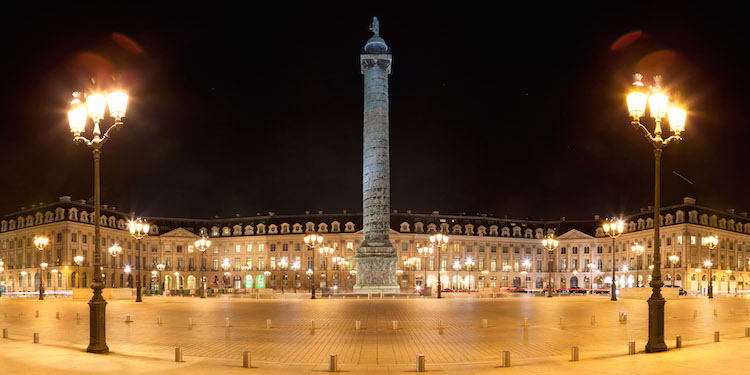
Along Rue de Rivoli, about halfway between the Louvre and Place de la Concorde, a street named Rue de Castiglione takes you north to Place Vendôme. Napoleon didn't build the place, it was laid out during the time of Louis XIV, who used the open space to celebrate his armies' victories. (Louis called it Place des Conquêtes until his armies started losing. Undaunted, he renamed it, immodestly, Place Louis le Grand.)
What Napoleon has to do with Place Vendôme is the tall column in the middle of it. It was built (1806 to 1810) as another monument to his victories. In fact, he melted down the bronze cannons captured from the defeated Russian and Austrian armies to create the relief that covers the column. What's the best way to top off a column like that? With a statue of Napoleon himself, of course.
After the revolutionary period, when the Bourbon kings were restored on the throne of France, the statue was removed from the column, melted down, and the metal was used to create the equestrian statue of Henry IV on the Pont Neuf, which still stand there today.
But the story of the column and the statue doesn't end there. The next king, Louis-Philippe, put a replacement statue of Napoleon on top of the Vendôme column. Then, Napoleon III, Bonaparte's nephew, replaced that with a better, more classical statue of his uncle. Finally, during the Paris Commune a mob led by painter Gustave Courbet pulled the entire column down — statue, bronze plates, and all. After the Commune itself crashed and burned, Courbet was tried and ordered to pay the cost of rebuilding the column. Courbet fled the country and died in exile a few years later. The column, though, was rebuilt and that's the one we see today, just waiting for the next revolution.
There's one more Napoleonic connection to Place Vendôme. Bonaparte built the wide avenue that connects the place with the grand boulevards to the north, at what is today Place de la Opera. These days that street is named Rue de la Paix, but when he built it, it was known as Rue Napoleon. What else would it be?
4. Around Place de la Concorde
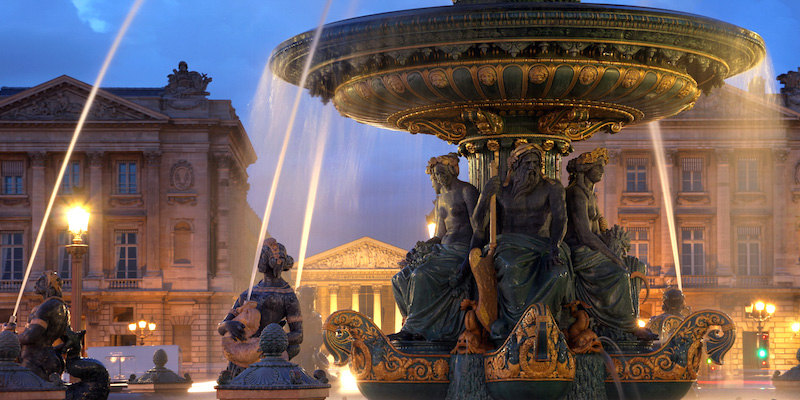 View through the fountains of Place de la Concorde, up Rue Royal, showing the facade of La Madeleine.
View through the fountains of Place de la Concorde, up Rue Royal, showing the facade of La Madeleine.
Let's resume our walk along the arcades of Rue de Rivoli to its western end at Place de la Concorde, another place that Napoleon didn't create but influenced during his reign. (The place, and the two buildings on its north side, was built during the time of Louis XV and originally named for him.) When Napoleon came to power he wanted to beautify the view from the place, possibly to help people forget that it was the location of the guillotine during the revolution. (Louis XV's grandson and heir, Louis XVI, was beheaded here.)
Place de la Concorde has a view to the south, across the Seine, of the Palais Bourbon, that became the meeting place of government during the French Revolution. To the north there is a view between the grand buildings up the hill of Rue Royal. At the top of the hill Napoleon decided to build a grand memorial to his army (which was called La Grande Armée) in a style based on a classical Greek temple, with columns across the facade.
To balance the southern view, Napoleon had the same colonnaded facade added to the front of Palais Bourbon, so that there was symmetry between the north and south views. The Palais Bourbon work was completed during Napoleon's time on the throne, but his temple to the Grande Armée would take decades to complete and, during that time, would be transformed into a Catholic church, Église de la Madeleine, though retaining its classical facade.
![]()
|
From Paris to Provence, Burgundy to Bordeaux, find hotel deals with current sale prices. Save up to 20% in cities, villages, beach towns, and storybook countryside escapes. |
|
Discover today's sale prices on hotel rooms in every village & city in France. Save up to 20%. Find hotels in Paris, Burgundy, Provence, the Loire Valley, Normandy, and everywhere else! |
5. Arc de Triomphe
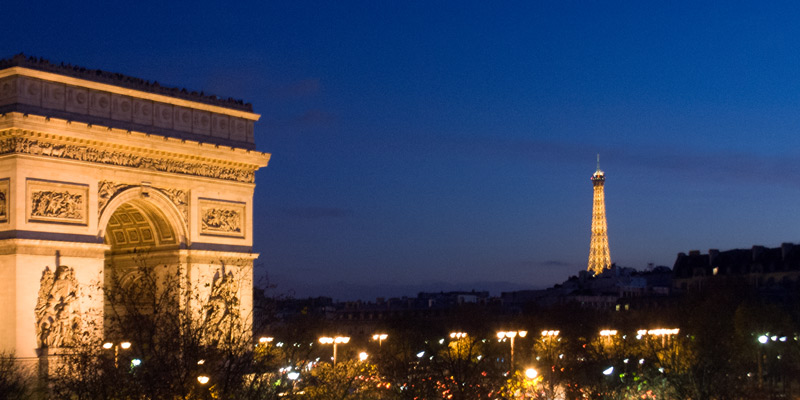 Arc de Triomphe with the Eiffel Tower (no, Napoleon didn't built the Tower), photo by Mark Craft
Arc de Triomphe with the Eiffel Tower (no, Napoleon didn't built the Tower), photo by Mark Craft
This monumental arch is certainly Napoleon's most enduring monument. Cross Place de la Concorde and head up Avenue des Champs-Elysées; you see that the first part of this famous street is pleasantly lined with trees and paths set away from the busy avenue. Pass Pavillon Ledoyen, Yannick Alleno's 3-star restaurant, and the Grand Palais complex. But once past Avenue Montaigne, Champs-Elysées becomes commercial and very busy, so you might want to hop on Metro Line 1 at Franklin D. Roosevelt and ride up the hill to the end of the street at the Arc de Triomphe.
This arch was commissioned by Napoleon in 1806, but not completed during his lifetime. (It was Louis-Philippe who competed it in 1836.) Based on another classic architectural piece, the Arch of Titus in Rome, it was one more memorial to Napoleon's military victories. Napoleon passed under the arch during the celebration of his marriage to his second wife, Marie-Louise in 1810. (A wooden mock-up temporarily completed the arch.) In an additional bit of symmetry, Napoleon's body passed beneath the arch when he was moved from Saint Helena to his tomb at Les Invalides.
You can climb the stairs to the top of the Arc de Triomphe to take in what we consider to be one of the best views of Paris.
6. Waterworks
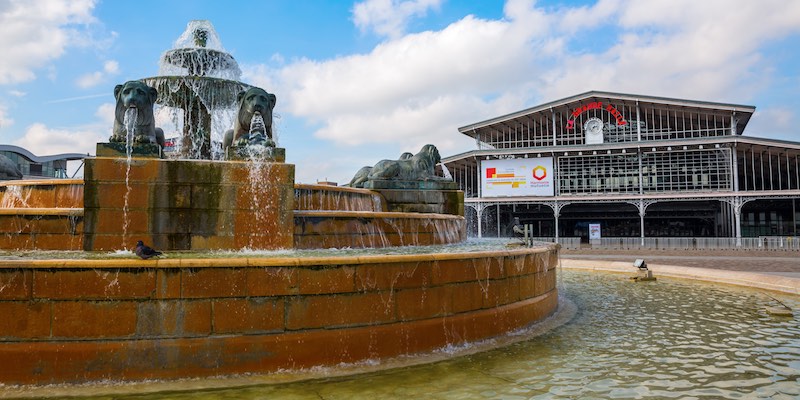 Napoleonic fountain, now located at Parc de la Villette in the 19th Arrondissement
Napoleonic fountain, now located at Parc de la Villette in the 19th Arrondissement
As you gaze down the Champs-Elysées from the top of the Arc de Triomphe, consider another positive impact Napoleon had on Paris — the water supply. At the time, Paris water came from the Seine, from a couple of local reservoirs, and from wells in the basements of the grander houses. There was an entire trade that delivered water to households for a fee. To Napoleon's lasting credit, he had a canal built from the River Ourcq northeast of Paris, to deliver fresh water to the city. That canal connects with Canal Saint Martin at the Bassin de la Villette in the 19th Arrondissement.
By 1812 water was being distributed free of charge to Paris households from city fountains that Napoleon also had built, fed from the Canal Ourcq. It was declared that the fountains should run day and night. Today you can still visit one of Napoleon's fountains, Fontaine de Mars, on Rue Saint-Dominique in the 7th Arrondissement.
There's a large fountain today at Parc de la Villette that was also built by Napoleon for Place de la République, but moved by Haussmann half a century later. In passing we should remember that Napoleon also built the first sections of the city's covered sewer system, running for about 30 kilometres.
![]()
Our Top-Rated Paris Experiences
7. Other Napoleonic Initiatives
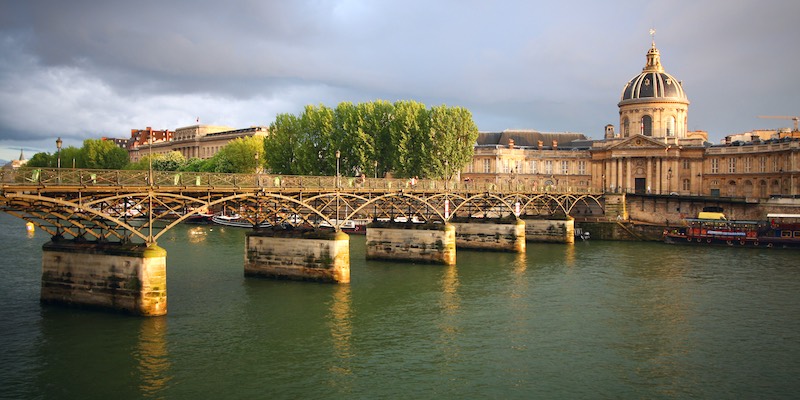 Pont des Arts between the Louvre and Monnaie – the original was built by Napoleon
Pont des Arts between the Louvre and Monnaie – the original was built by Napoleon
Napoleon has had a lasting impact on Paris in many other other ways. Here are a few —
- A common system of street numbering — odd numbers on one side of the street and evens on the other — with numbers starting at the closest point to the Seine. (That bit of info may help you when you're looking for a street address.)
- Pont d'Iéna, connecting the Left Bank to the Right Bank at the foot of the Eiffel Tower. (The tower didn't exist back then, of course.)
- Pont des Arts, the pedestrian bridge in front of the Louvre, and the first iron bridge in Paris. (The bridge was completely rebuilt in the 1980s.)
- Restaurant Le Grand Véfour at the end of the gardens of Palais Royal. Napoleon didn't build this, but he ate there back when he was merely a general.
- Debauve et Gallais chocolatiers on the Right Bank, the chocolate makers who supplied Marie-Antoinette and, later, Napoleon.
Napoleon's Tomb – His Final Return
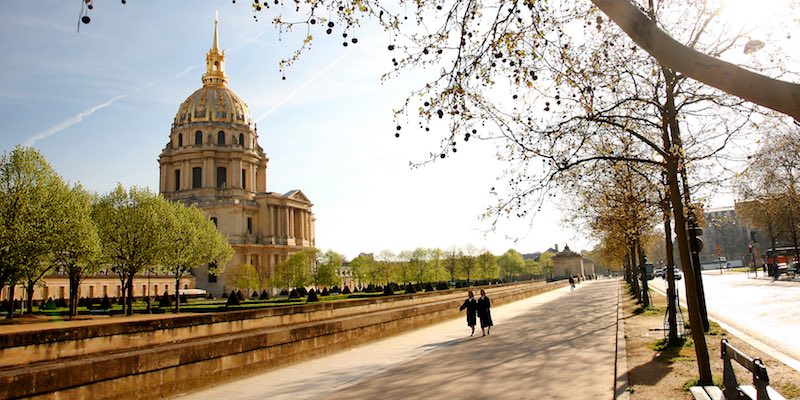 L'Église du Dome at Les Invalides, where Napoleon's body lies today
L'Église du Dome at Les Invalides, where Napoleon's body lies today
Napoleon fell from power in 1814 and was exiled to the Mediterranean island of Elba. But an island couldn't hold back this Corsican dynamo. He escaped back to Paris, raised an army, was defeated again, and exiled once more, this time to the bleak Atlantic island of Saint Helena, where he died in 1821.
A couple of decades later, under Louis-Philippe, Napoleon's body was returned to Paris and placed in a tomb inside the domed church at Les Invalides, where you can view it today.
Paris Planning Guides
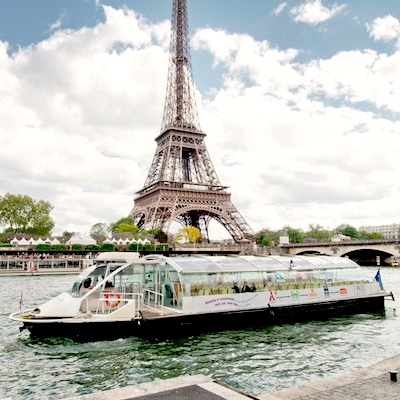 Best City Tours
Best City Tours |
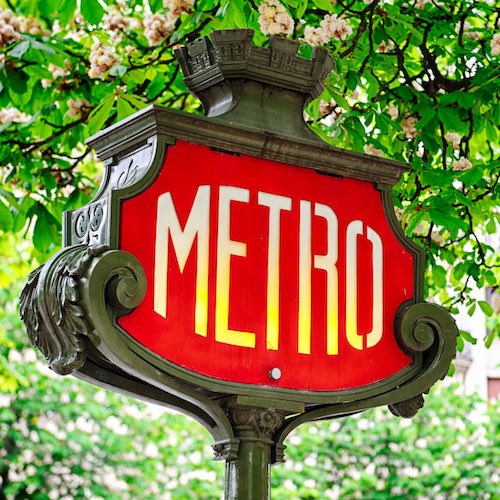 Paris Metro Guide
Paris Metro Guide |
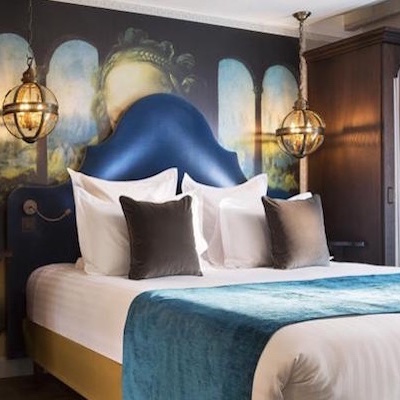 Boutique Hotels
Boutique Hotels |
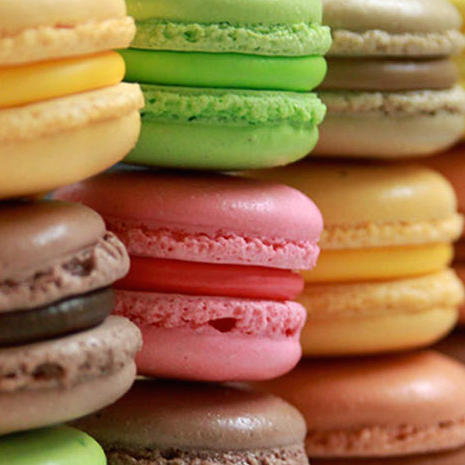 10 Food Activities
10 Food Activities |
